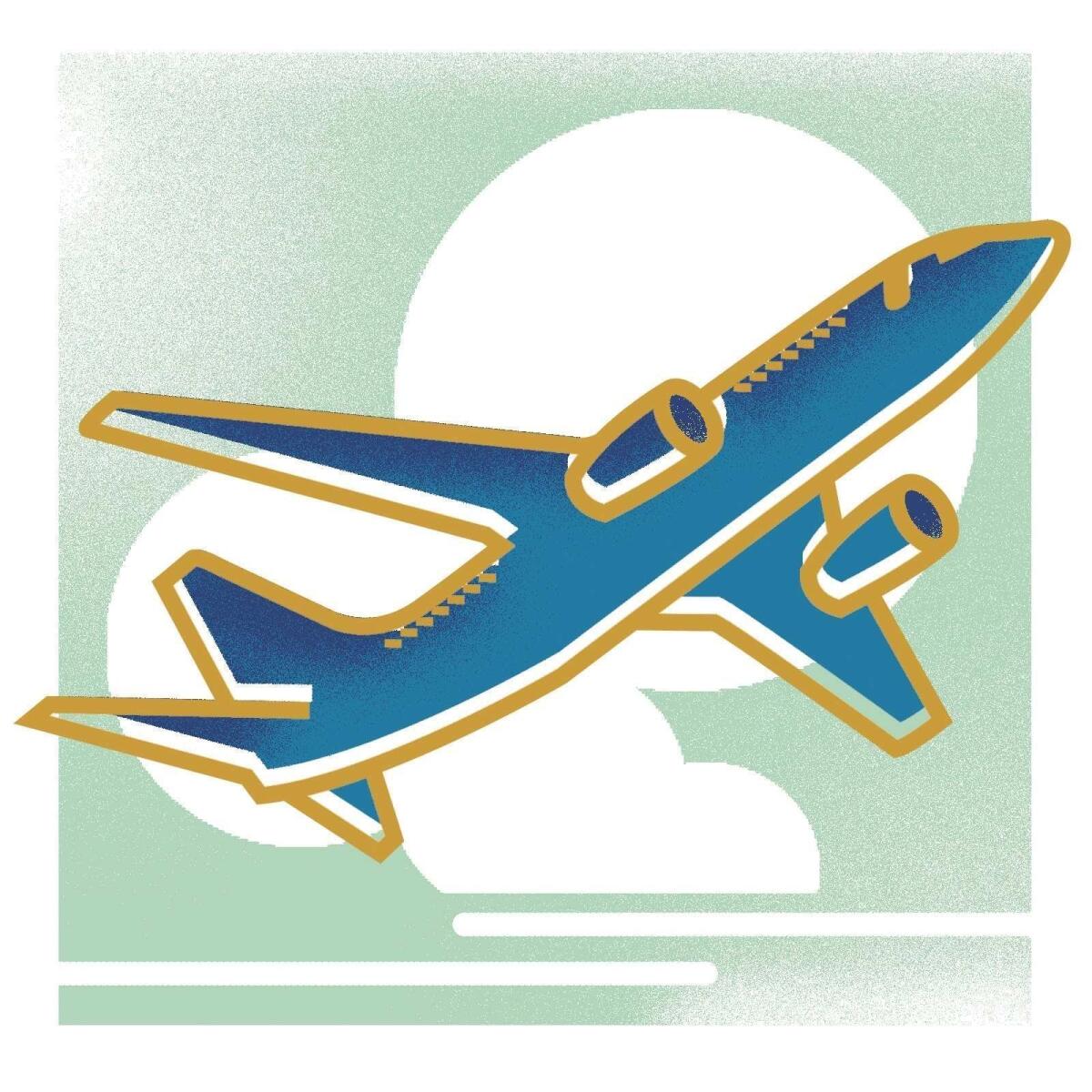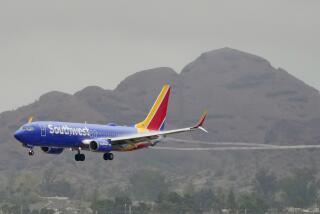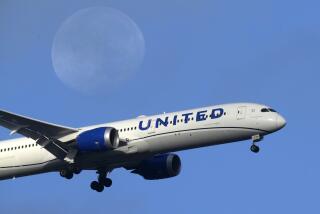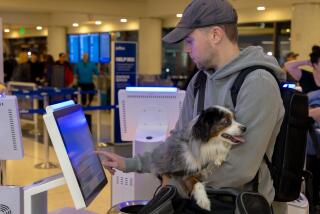Woe is the leisure traveler as frequent-flier programs change

In the March 9 On the Spot, reader Kurt Sipolski of Palm Desert asked whether it was legal for airlines to charge a maintenance fee for frequent-flier miles. (It is.) Sipolskiâs question raised several issues that affect leisure travelers, who are price-sensitive and may be more loyal to savings than to one airline. We might accumulate miles with credit cards, but itâs really the business traveler who is the airlinesâ BFF, not us. Will we always be outside of the tent?
As long as the tent looks the way it does now, we will be when it comes to frequent-flier programs and maybe even regular service.
Frequent-flier programs were invented to achieve at least two goals: The first was to find out more about the airlinesâ customers and their travel habits. The second was to move what Jeff Berry, research director for Colloquy, which studies, analyzes and writes about awards programs, calls âdistressed inventoryâ â that is, seats that havenât been sold. The flier programs reward passengers for their behavior by giving them something that costs the airlines almost nothing.
You can see the need for these programs if you look at load factors from the Bureau of Transportation Statistics. In the late â90s, planes were generally flying about 70% full. On a 747 with room for about 300 passengers (configurations vary by airline), that meant 90 chances for revenue out the window. The programs were a great way to make lemonade out of that lemon.
Now the programs appear to be collapsing in on themselves, a look at some important numbers shows: First, domestic and international aircraft now fly about 83% full, thanks to mergers and downsizing. Second, each year, $17 billion worth of flier points is issued, Berry said, through awards, credit cards and other means.
Just a quick look at Delta, which has recently been criticized for not only devaluing flier miles but also for changing how those miles are awarded, tells a story about the enormousness of flier programs. Warren Chang, vice president of Fly.com, found this in Deltaâs Securities and Exchange Commission filing: âIn 2013, program members redeemed more than 271 billion miles in the SkyMiles program for 11 million award redemptions.â
The programs, it appears, are victims of their own success, as anyone who has tried to book an awards seat knows. Playing the game requires fortitude, cunning and ânever say buyâ determination.
Airline alliances, which give fliers the ability to use miles on various airlines (you can see which airlines belong to what alliances at lat.ms/1h7GEQ9), help but donât solve the problem.
This reminds me of the dilemma faced by the family of a onetime colleague. Their home on the Dakota plains was so infested with snakes that when someone reached to open a door, it wasnât unusual to find serpents twisted around the doorknob. After exterminators failed to solve the problem, they solved it by burning down the house and building a new one.
A new house for the airlines, figuratively speaking, might look more like rewards programs that give you âsome kind of value that isnât related to the airlines,â such as a gift card that youâre likely to use, Berry said. (You often can buy merchandise with your miles, but in my experience, itâs not merchandise I want.) That way, programs that are supposed to reward you actually do that instead of, in Berryâs words, ârunning directly counter to what the intent is ⦠and [the new way] creates a connection that gives something back.â
The leisure traveler might not make out like the proverbial bandit, but at least he gets his nose in the tent.
But the truth is, travel friends, that absent that change and others, life promises to be more financially painful than it has been.
This became clear to me recently when I checked airfares to London for Aug. 5-12, high-season dates chosen at random. The best nonstop fare I found early last week: $1,551 round trip from LAX.
The future for the leisure traveler looks tough, especially if Joshua Schank, president and chief executive of the Eno Center for Transportation, a nonprofit think tank, is correct. Airline mergers â US Airways and American being the most recent â have played a big role in the squeeze on leisure travelers, and âI donât think weâve seen the end of it,â he said.
Before you put away your suitcase, consider Spirit and Allegiant, newer entrants into the market that are designed to serve the leisure traveler, Schank said. They may not be your cup of tea, with charges for things weâre accustomed to not paying for (carry-on bags cost on Spirit, Allegiant charges for online booking), but they are tea. He hopes that reduced regulatory barriers for airlines may encourage newcomers to the market.
Donât count out some of the other carriers either, Chang said. Frontier is an up-and-coming low-cost carrier. JetBlue and Virgin America represent hybrids that show promise for the leisure traveler. For international travel, consider Norwegian Air Shuttle (coming to the L.A. market in spring), Air Berlin and even Aeroflot (which is showing a $1,400 two-stop ticket to London for the dates mentioned above).
The path to pleasure may be rife with pain, but that may be the price we pay to fulfill our dreams. Two stops on Aeroflot to get to London to save $151? That might be pushing the outer limit of sanity, but fortunately a leisure travelerâs creativity generally knows no bounds.
Have a travel dilemma? Write to [email protected]. We regret we cannot answer every inquiry.
More to Read
Sign up for The Wild
Weâll help you find the best places to hike, bike and run, as well as the perfect silent spots for meditation and yoga.
You may occasionally receive promotional content from the Los Angeles Times.







